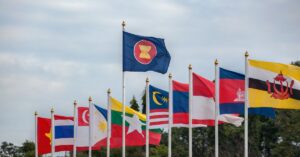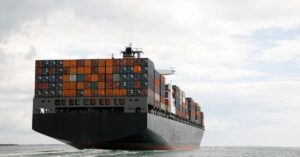Trade integration in the ASEAN region has made significant strides in recent decades, with the signing of the Regional Comprehensive Economic Partnership (RCEP) in 2020 serving as a crowning achievement. As the world’s largest trade agreement, RCEP has the potential to reshape regional economic dynamics and further deepen integration among ASEAN member states and their dialogue partners. However, the path to seamless trade integration is fraught with challenges that must be overcome to ensure sustained growth and shared prosperity. This article delves into the prospects and hurdles that lie ahead for ASEAN’s trade integration, drawing on an array of academic sources to provide a nuanced understanding of the region’s economic trajectory.
The RCEP’s potential benefits are substantial, as the trade pact encompasses approximately 30% of the world’s population and GDP (Urata, 2021). The agreement aims to lower tariffs, reduce non-tariff barriers, and streamline trade rules, thereby promoting the efficient flow of goods, services, and investment throughout the region (Petri & Plummer, 2019). Additionally, the RCEP is expected to boost regional value chains, which are essential for the development of small and medium-sized enterprises (SMEs) and the creation of new jobs (Wignaraja, 2020).
However, the RCEP faces several obstacles that could impede its effectiveness in promoting trade integration. One such challenge is the disparity in economic development among member countries, which may lead to unequal distribution of benefits (Capannelli, 2021). Less-developed ASEAN members may struggle to compete with more advanced economies, raising concerns about the potential for increased inequality within the region (Menon, 2020).
Moreover, non-tariff barriers, such as customs procedures, technical regulations, and sanitary measures, remain a persistent issue in ASEAN trade (Anukoonwattaka & Mikic, 2021). Addressing these barriers will require coordinated efforts among member states to harmonize standards and regulations, a process that could be hampered by varying national interests and priorities (Rahman, 2021).
Another challenge is the lack of integration in services and investment sectors. Although the RCEP includes provisions on these areas, deeper liberalization and regulatory convergence are necessary to unlock the full potential of regional trade in services and investment (Petri & Plummer, 2019).
Furthermore, the region’s susceptibility to external shocks and geopolitical tensions, particularly the US-China rivalry, could complicate ASEAN’s trade integration efforts. Maintaining the bloc’s neutrality and centrality amid shifting global dynamics is crucial for preserving the stability needed to foster economic growth (Rüland, 2020).
In conclusion, ASEAN’s trade integration, epitomized by the RCEP, offers promising prospects for regional economic growth and development. Yet, addressing the challenges of economic disparity, non-tariff barriers, services and investment liberalization, and geopolitical uncertainties is imperative to ensure a more equitable and sustainable future for the region.
References:
Urata, S. (2021). Assessing the Impact of the Regional Comprehensive Economic Partnership on ASEAN. Journal of Southeast Asian Economies, 38(1), 1-20.
Petri, P. A., & Plummer, M. G. (2019). East Asian Integration: Towards an East Asian Economic Community? The World Economy, 42(3), 643-672.
Wignaraja, G. (2020). The Regional Comprehensive Economic Partnership: Deepening ASEAN’s Value Chains Amid Mega-regionalism. Journal of Southeast Asian Economies, 37(2), 221-238
Capannelli, G. (2021). Inclusive Growth and Regional Integration: Challenges and Opportunities for ASEAN in the Global Economy. Journal of Asian Economics, 73, 101283.
Menon, J. (2020). The Impact of Trade Costs on ASEAN Economic Integration: Insights from a New Database. World Development, 135, 105066.
Anukoonwattaka, W., & Mikic, M. (2021). Non-Tariff Measures and Regional Integration in ASEAN. Asia & the Pacific Policy Studies, 8(1), 50-68.
Rahman, M. M. (2021). Regional Economic Integration in ASEAN: Progress, Challenges, and Prospects. Journal of Asian and African Studies, 56(1), 141-159.
Rüland, J. (2020). ASEAN and the Making of an Indo-Pacific Order: Coping with the Rise of China and the Retreat of the United States. Contemporary Southeast Asia, 42(2), 183-208.











